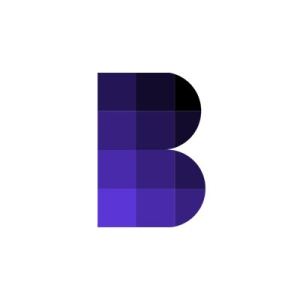Inflation in Bolivia has hit 25%, and dollars are scarce, pushing people toward cryptocurrencies
Bolivia is in the middle of a money crisis, and the boliviano is no longer the safe bet it once was. Inflation has blown up to 25%, the highest in 34 years. Dollars are almost impossible to get. Trust in the government is hanging by a thread. So people are moving fast into cryptocurrencies, as a way to keep their businesses running and their savings from shrinking. At El Alto International Airport, a shop sells candy and sunglasses in USDT , a stablecoin tied to the dollar. A top university sends paychecks in Bitcoin to foreign professors. For a while, the state oil company even got permission to make foreign payments in stablecoins. In just the first half of 2025, digital transactions shot up more than five times, hitting $300 million. “Among importers, crypto use is high,” Oswaldo Barriga said. “When they can’t access hard currency and need to make urgent payments, crypto becomes a viable alternative.” Bolivians turn to digital money as the economy falls apart The numbers behind the crisis are grim. The government has run budget deficits for 11 years in a row. Foreign debt has grown to about a quarter of the country’s GDP. The natural gas industry, once a steady source of dollars, has collapsed. On top of that, the boliviano’s fixed exchange rate has made imported goods more expensive. For most people, the value of their money is dropping every week. This has created a perfect opening for crypto. Many see it as a way to avoid the slow death of their savings. But it’s not without risks. Some stablecoins have been caught with shaky reserves. Bitcoin’s price can jump or crash in a single day. Even so, the distrust in banks and government is so deep that people prefer the risk. With a presidential election coming on August 17, no one expects a quick fix, and the shift toward digital assets is already too far along to stop. Getting US dollars is a headache. Banks sometimes allow only $100 a week in withdrawals. On the black market, one dollar goes for 14 bolivianos, double the official rate, the same price many pay for one USDT. This has made stablecoins a practical stand-in for cash. In downtown La Paz, Christopher Salas runs a small coffee stand. Most customers still pay in bolivianos, but some use satoshis, the smallest unit of Bitcoin, by scanning a QR code linked to their Blink wallet. “I’m not the only one using Bitcoin,” Christopher said. “There’s a barbershop over there and a gym that also accepts satoshis.” For him, it’s both a way to protect his savings and, as he put it, “a way to go against the system, against bureaucracy.” Platforms and payment systems race to keep up with demand Crypto platforms are seeing a rush of new users. Carlos Neira, who co-founded Colombian wallet provider Meru, said Bolivian accounts on his platform have grown by 6,600% since the ban was lifted. Binance is also popular for its low fees and beginner tutorials. But there are reminders of how fragile the market can be. The Terra stablecoin collapsed in 2022, wiping out billions. In 2021, Tether paid $41 million to settle US claims that it lied about its reserves. Even the US dollar, the anchor for most stablecoins, is down about 8% this year, according to data from Bloomberg , because of changes in US trade policy. The government’s involvement has been minimal since legalizing crypto. Unlike El Salvador, which made Bitcoin legal tender and heavily promoted it, Bolivia simply ended the ban and stepped back. Adoption here has been driven by the public, not a state campaign. In El Salvador , only 4.9% of transactions in 2023 were in Bitcoin despite the law. Other Latin American countries have also seen people turn to crypto during inflation (like Venezuela and Argentina), but mostly as savings. In Bolivia, it’s becoming a payment tool. “Foreign companies view Bolivia as the epicenter of the crypto ecosystem in Latin America,” Mauricio Dulon said at a recent crypto summit in La Paz. That interest has brought more providers into the market. Hugo Miranda of the Bolivia Internet Foundation said both global and local companies are moving in fast. Social media influencers are promoting crypto as a way to escape financial limits. Businesses are adapting, too. Cryptopolitan Academy: Coming Soon - A New Way to Earn Passive Income with DeFi in 2025. Learn More
 cryptopolitanabout 4 hours ago
cryptopolitanabout 4 hours ago
Trump’s Executive Orders May Open 401(k) Plans to Bitcoin Investments and Address Banking Discrimination
Trump’s executive orders now allow 401(k) investments in cryptocurrencies, significantly impacting Bitcoin’s value, which surged over $117,000. Bitcoin’s price surged past $117,000 following Trump’s executive orders, opening 401(k) investments to
 coinotagabout 4 hours ago
coinotagabout 4 hours ago
Trump Signs Executive Order to Allow Crypto into 401(k)
US President Donald Trump has signed a new executive order into effect that will allow American 401(ks) to invest in digital assets and related financial instruments. This could be a massive move for the entire digital currency market, as 401(k)s, also known as retirement funds, collectively hold a massive $6.12 trillion in assets and could
 zycryptoabout 4 hours ago
zycryptoabout 4 hours ago
BJMINING cloud mining is a stable choice amidst Bitcoin’s high volatility.
In August 2025, Bitcoin prices remained above $116,000. Amidst dovish signals from the Federal Reserve and the continued inflow of ETF funds, sentiment among both institutional and retail investors rebounded. Although the upward trend has slowed, the market generally expects Bitcoin to challenge $125,000 this year. For many digital asset holders, instead of frequently trading for volatile returns, it’s better to leverage professional platforms like BJMINING to achieve a stable daily income of $9,000 through cloud mining. What is BJMINING? Founded in the UK, BJMINING has been deeply involved in the cloud mining industry for over a decade and is currently the world’s leading compliant cloud mining platform. Users can participate in the mining process of major cryptocurrencies such as BTC, ETH, DOGE, SOL, and XRP by renting remote computing power, without having to purchase mining machines or bear the cost of electricity and maintenance. The platform currently has over 5 million registered users worldwide and has accumulated over 10 million service orders, truly making mining accessible to everyone. BJMINING Platform Advantages Free Trial New users who successfully register an account for the first time can receive a $15 new user bonus and experience cloud mining for free and without risk. Zero threshold to start No need to purchase any mining machines, just register and start using, avoiding high electricity bills and equipment loss. Fully transparent settlement 0 management fees, 0 hidden fees; view daily earnings and contract progress with one click in the background. Multiple currency withdrawal options Supports mainstream assets such as BTC, DOGE, USDT-TRC20/ERC20, ETH, XRP, LTC, SOL, BCH, USDC , etc., with zero withdrawal fees. High referral rewards Invite friends to earn 3% active referral bonus + 2% indirect referral bonus, with no upper limit on earnings. Security It uses a dual protection system of McAfee® and Cloudflare®, is fully insured by AIG, and comes with 24/7 online technical support. How to participate in BJMINING cloud mining? Go to the official website to register an account and receive a $15 new user bonus; Deposit BTC or other mainstream currencies and select the appropriate cloud mining contract; The system runs automatically around the clock, with stable daily income deposited into your account, and supports withdrawal or reinvestment at any time. Contract Profit Example 【WhatsMiner M50S+】: Investment: $100, Term: 2 days, Total Revenue: $100 + $6 【WhatsMiner M60S++】: Investment: $600, Term: 7 days, Total Revenue: $600 + $52.50 【Avalon Miner A1566】: Investment: $1,200, Term: 15 days, Total Revenue: $1,200 + $234 【WhatsMiner M66S+】: Investment: $5,800, Term: 30 days, Total Revenue: $5,800 + $2,610 【Antminer L7】: Investment: $12,000, Term: 40 days, Total Revenue: $12,000 + $8,160 【Antminer S21e XP Hyd】:Investment amount: $27,000, Term: 45 days, Total income: $27,000 + $21,870 The platform has launched a variety of contracts, which can be viewed in the contract section of the official website. Future Outlook ETF inflows, stabilizing macro interest rates, and the impending block reward halving are all contributing to a new cycle of Bitcoin’s upward trajectory. At this historical juncture, leveraging BJMINING to steadily unlock the value of mining machines is a robust strategy for generating cash flow from crypto assets. Conclusion Instead of waiting for price spikes, lock in daily passive income. BJMINING leverages its strong regulatory compliance capabilities and user base to provide convenient and secure cloud mining solutions for global investors. Register now to receive a $15 new user bonus and start your journey to earning $9,000 a day! Official Website: https://bjmining.com Official Email: info@bjmining.com Disclaimer: This is a sponsored press release for informational purposes only. It does not reflect the views of Times Tabloid, nor is it intended to be used as legal, tax, investment, or financial advice. Times Tabloid is not responsible for any financial losses. The post BJMINING cloud mining is a stable choice amidst Bitcoin’s high volatility. appeared first on Times Tabloid .
 timestabloidabout 4 hours ago
timestabloidabout 4 hours ago
Bitcoin ETFs Lead $280M Inflows as Ethereum Funds Attract $222M on August 7
Bitcoin ETFs attracted $280.69M on August 7, led by BlackRock’s IBIT fund. Ethereum ETFs gained $222.34M, with BlackRock’s ETHA fund topping inflows. Hong Kong spot Bitcoin and Ethereum ETFs remained inactive on the same day. The spot cryptocurrency ETF market saw significant capital inflows on August 7, 2025. According to SoSoValue, Bitcoin ETFs attracted $280.69 million in total inflows that day, while Ethereum-focused funds gathered $222.34 million. Among Bitcoin products, BlackRock’s IBIT fund led with $156.64 million in investments. Fidelity’s FBTC followed with $43.45 million. Other Bitcoin ETFs with inflows included: HODL — $21.49 million GBTC — $18.48 million BTC — $17.17 million BITB — $17.17 million EZBC — $3.38 million BRRR — $3.30 million Meanwhile, the ARKB product reported an outflow of $388,000, standing out amidst mostly positive trends. The Ethereum ETF sector also experienced positive momentum. The largest inflow was to BlackRock’s ETHA fund, which attracted $103.52 million. Other notable inflows were recorded by Grayscale’s ETH ($34.61 million) and Fidelity’s FETH ($31.82 million). Additional funds receiving capital included: ETHW — $24.79 million ETHE — $10.87 million ETHV — $7.04 million EZET — $5.84 million QETH — $3.86 million Despite the robust inflows in the US market, spot Bitcoin and Ethereum ETFs in Hong Kong reported no significant trading activity on August 7, underscoring regional differences in investor behavior and regulatory environments. This strong demand for spot ETFs in the US reflects ongoing appetite among investors to gain regulated, direct exposure to leading cryptocurrencies through traditional financial products. As digital asset markets evolve, such inflows may continue supporting price stability and fostering broader adoption.
 coinpaperabout 4 hours ago
coinpaperabout 4 hours ago
AI Medical Assistant: NASA and Google’s Revolutionary Leap for Astronaut Care
BitcoinWorld AI Medical Assistant: NASA and Google’s Revolutionary Leap for Astronaut Care In a world where digital innovation rapidly reshapes our daily lives, the convergence of artificial intelligence and space exploration is poised to revolutionize humanity’s reach beyond Earth. For those keenly following the cutting-edge of technology, much like the advancements in blockchain and cryptocurrencies, the latest collaboration between NASA and Google represents a monumental stride. They are jointly developing an AI medical assistant , a groundbreaking tool designed to ensure the well-being of astronauts on unprecedented long-duration voyages, especially to Mars. This initiative not only pushes the boundaries of medical support but also highlights the critical role of advanced AI in enabling future space missions . Why is Earth-Independent Space Health Crucial? For decades, astronauts on the International Space Station have benefited from relatively close proximity to Earth, allowing for real-time communication with medical experts in Houston, regular resupply of medicines, and the option of a swift return home if severe health issues arise. However, as NASA, in partnership with private ventures like Elon Musk’s SpaceX, sets its sights on journeys to the Moon and Mars, these luxuries will no longer be available. The sheer distance and duration of these future space missions necessitate a paradigm shift in space health protocols. Astronauts will need to be self-sufficient, capable of handling complex medical situations without immediate external support. This looming reality is the driving force behind NASA’s push for ‘Earth-independent’ medical solutions. Unveiling the AI Medical Assistant: CMO-DA At the heart of this transformative effort is the Crew Medical Officer Digital Assistant (CMO-DA), an experimental AI medical assistant born from the collaborative genius of NASA Google AI . This proof-of-concept tool is specifically engineered to empower astronauts to diagnose and treat symptoms effectively, even when direct communication with Earth is compromised or impossible. Running within Google Cloud’s Vertex AI environment, CMO-DA is a multimodal system, processing information through speech, text, and images. David Cruley, a customer engineer at Google’s Public Sector business unit, explained that the project operates under a fixed-price Google Public Sector subscription, covering cloud services, application development infrastructure, and model training. Significantly, NASA retains ownership of the source code and has played a pivotal role in fine-tuning the underlying AI models, leveraging the Vertex AI platform’s access to both Google and third-party models. Rigorous Testing and Promising Astronaut Care Outcomes The effectiveness of CMO-DA, the pioneering AI medical assistant , has been rigorously tested through simulated medical scenarios. NASA and Google subjected the tool to three distinct challenges: an ankle injury, flank pain, and ear pain. A panel of three physicians, including an experienced astronaut, meticulously evaluated the assistant’s performance across critical aspects: initial evaluation, history-taking, clinical reasoning, and treatment planning. The results were highly encouraging, showcasing a remarkable degree of diagnostic accuracy. The assessment found the flank pain evaluation and treatment plan to be 74% likely correct, ear pain at 80%, and an impressive 88% accuracy for the ankle injury. These promising figures underscore the potential of CMO-DA to significantly enhance astronaut care in remote space environments. The Evolutionary Path for Space Health and Beyond The development roadmap for this advanced AI medical assistant is intentionally incremental, reflecting a cautious yet ambitious approach. NASA scientists have outlined plans to integrate additional data sources, such as direct inputs from medical devices, to further enrich the AI’s diagnostic capabilities. A key future objective is to train the model to be ‘situationally aware,’ meaning it will be attuned to the unique physiological and environmental conditions of space medicine, including the profound effects of microgravity. While Google’s Cruley remained circumspect about the company’s immediate plans for regulatory clearance to deploy this type of medical assistant in terrestrial doctor’s offices, the potential for such a transition is evident. The lessons learned from developing this tool for space health could undoubtedly have broad applicability to other areas of healthcare, extending its impact far beyond future space missions and offering innovative solutions for medical challenges on Earth. The collaboration between NASA and Google on the Crew Medical Officer Digital Assistant marks a pivotal moment in human spaceflight and medical technology. This AI medical assistant is not merely a tool; it’s a testament to human ingenuity, preparing us for the next giant leaps in space exploration. By empowering astronauts with autonomous medical capabilities, we are not only safeguarding their health on long-duration missions but also laying the groundwork for revolutionary advancements in healthcare that could benefit everyone on Earth. As we look towards a future where humanity ventures deeper into the cosmos, the synergy of AI and space medicine promises a healthier, safer journey for all. To learn more about the latest AI trends, explore our article on key developments shaping AI models for future applications. This post AI Medical Assistant: NASA and Google’s Revolutionary Leap for Astronaut Care first appeared on BitcoinWorld and is written by Editorial Team
 bitcoinworldabout 4 hours ago
bitcoinworldabout 4 hours ago
Crypto investors hopeful amid new regulatory orders
Trump’s executive orders gave crypto holders optimism, but actionable progress could be slow
 blockworksabout 4 hours ago
blockworksabout 4 hours ago
OpenArt Unleashes Revolutionary AI Videos: Brainrot and Beyond
BitcoinWorld OpenArt Unleashes Revolutionary AI Videos: Brainrot and Beyond In the rapidly evolving digital landscape, the intersection of artificial intelligence and content creation is forging new frontiers. For those keenly observing the cryptocurrency and broader tech markets, the emergence of groundbreaking AI tools presents both immense opportunities and complex challenges. One such development capturing significant attention is the rise of AI-generated AI videos , particularly the viral phenomenon dubbed ‘brainrot’ videos. These captivating, often bizarre clips are redefining digital storytelling and user engagement, driven by innovative startups like OpenArt. What are ‘Brainrot Videos’ and Why Are They Trending? You’ve likely scrolled past them on your social media feeds: short, hyper-imaginative clips featuring characters like a shark in sneakers or a ballerina with a coffee cup for a head. These are the so-called ‘brainrot videos,’ a term coined to describe their often nonsensical yet strangely compelling nature. They are currently gaining significant traction, especially among younger users, due to their unique visual style and rapid production. What makes these brainrot videos so appealing is their ability to deliver a quick, often humorous, and visually striking narrative that stands out in a crowded content space. The appeal lies in: Novelty: They offer something distinctly different from traditional video content. Ease of Consumption: Short, digestible formats perfect for platforms like TikTok. Creativity Unleashed: AI allows for character and scenario combinations previously unimaginable or too costly to produce. This trend highlights a broader shift towards AI-assisted content creation, making it accessible to a wider audience than ever before. OpenArt’s Revolutionary ‘One-Click Story’ Feature At the forefront of this new wave is OpenArt , an AI startup founded in 2022 by two former Google employees. With approximately 3 million monthly active users, OpenArt is not just riding the trend; it’s actively shaping it. The company recently launched its highly anticipated ‘one-click story’ feature in open beta, a tool designed to drastically simplify video production. This innovative feature allows users to: Input a single sentence, a script, or even an audio file like a song. Transform that input into a one-minute video complete with a coherent story arc. The versatility of this tool is impressive. It can generate light-hearted stories ideal for TikTok, more serious explainer videos for YouTube, or even compelling music videos. OpenArt even envisions its application in advertising, offering a new avenue for brands to create dynamic, engaging content quickly. The ‘one-click story’ feature provides three distinct templates: Character Vlog: Users upload an image of their character and enter a prompt to guide the narrative. Music Video: The software analyzes uploaded songs, understands the lyrics, and generates animations that align with the song’s themes, such as illustrating flowers blooming in a garden for a nature-themed track. Explainer: Designed for educational or informational content, simplifying complex topics into engaging visual stories. Users maintain creative control, able to edit individual clips by revisiting the editor’s storyboard mode and tweaking prompts for a more refined result. OpenArt’s platform stands out by aggregating over 50 different AI models, including popular ones like DALLE-3, GPT, Imagen, Flux Kontext, and Stable Diffusion, allowing users to choose their preferred tools for generation. The Power of Generative AI in Video Creation The core of OpenArt’s innovation lies in its masterful application of generative AI . This technology, which can produce new content from existing data, is democratizing video production by significantly lowering the barrier to entry for aspiring creators. Previously, creating animated or highly visual content required extensive skills in animation, graphic design, and video editing, along with expensive software and hardware. With generative AI, the process is streamlined: Speed: Content that once took days or weeks can now be produced in minutes. Accessibility: Individuals without specialized technical skills can create professional-looking videos. Innovation: The ability to experiment with unique characters and narratives is greatly enhanced, leading to novel content forms like ‘brainrot’ videos. This shift empowers a new generation of digital artists and content creators, fostering an environment where imagination is the primary limit, not technical proficiency or budget. The ability to quickly iterate and refine ideas means creators can adapt to trends and audience feedback at an unprecedented pace. Navigating the Complexities: IP and Ethical Challenges for AI Videos While the benefits of tools like OpenArt are clear—such as rapidly producing content with original characters and narratives—the landscape of AI videos is not without its controversies. The rapid advancement of generative AI has brought numerous ethical and legal issues to the forefront. These include concerns about: Imitating Artists’ Styles: AI models can learn and replicate the distinctive styles of human artists, raising questions about attribution and compensation. Intellectual Property (IP) Rights: The use of copyrighted characters or imagery in AI-generated content poses significant legal risks. Misuse and Misinformation: The ease of creating realistic but fabricated videos raises concerns about the spread of deepfakes and misinformation. During testing, OpenArt acknowledged that its Character Vlog option might inadvertently venture into legally grey areas, particularly concerning characters like Pikachu, SpongeBob, and Super Mario. The potential for IP infringement is real, as evidenced by recent lawsuits, such as Disney and Universal suing AI firm Midjourney over AI-generated images. Users should be acutely aware that creating videos that infringe on copyright could lead to their content being removed from social media platforms. Furthermore, users found to have contributed to infringement could face legal action from copyright holders. Coco Mao, co-founder and CEO of OpenArt, addressed these concerns, stating, “We try to be cautious around the IP infringement. When you upload some IP characters, by default, the models we use will reject them, and it’s not able to produce the IP character, but sometimes it slips.” Mao also expressed openness to discussing licensing agreements with major IP holders, indicating a proactive approach to these complex legal challenges. OpenArt: A Promising AI Startup with Big Plans What truly sets OpenArt apart in the crowded AI space is its commitment to character consistency. Unlike many average video models that produce simple, standalone clips users must manually piece together, OpenArt aims to ensure that both visuals and narrative remain cohesive throughout the video. “A problem that a lot of AI couldn’t really handle well is to have the character consistent in the same video…If you don’t have the same character, then it’s hard to get immersed in the story,” Mao explained. This focus on narrative immersion is a significant differentiator, making OpenArt’s outputs more compelling and professional. Looking ahead, OpenArt has ambitious plans for its ‘one-click’ feature, including enabling users to create videos featuring conversations between two different characters. The development of a mobile application is also on their roadmap, promising even greater accessibility and convenience for creators on the go. Financially, OpenArt operates on a credit-based system, offering several plans to cater to different user needs: Basic Plan: $14 per month for 4,000 credits, including up to 4 One-Click stories, 40 videos, 4,000 images, and 4 characters. Advanced Plan: $30 per month for 12,000 credits, including up to 12 One-Click stories. Infinite Plan: Priced at $56 per month for 24,000 credits. Team Plan: Available for $35 per month per member. To date, OpenArt has successfully raised $5 million in funding from notable investors like Basis Set Ventures and DCM Ventures. The company boasts a positive cash flow and is on track to achieve an impressive annual revenue rate exceeding $20 million, signaling strong market adoption and financial health for this innovative AI startup. OpenArt’s journey highlights the dynamic nature of AI innovation. By simplifying complex creative processes and addressing user needs for narrative consistency, OpenArt is not just creating ‘brainrot’ videos; it’s pioneering a new era of accessible, AI-powered storytelling. While the ethical and legal challenges surrounding AI-generated content remain, OpenArt’s proactive approach and commitment to continuous improvement position it as a key player in the future of digital media. For creators, marketers, and enthusiasts alike, understanding these developments is crucial as AI continues to reshape how we consume and produce content. To learn more about the latest generative AI trends, explore our article on key developments shaping AI models features . This post OpenArt Unleashes Revolutionary AI Videos: Brainrot and Beyond first appeared on BitcoinWorld and is written by Editorial Team
 bitcoinworldabout 5 hours ago
bitcoinworldabout 5 hours ago
Core Scientific’s Largest Active Shareholder to Vote Against CoreWeave Acquisition
Key Takeaways: Two Seas Capital opposes CoreWeave’s proposed acquisition of Core Scientific, citing valuation and deal structure concerns. The deal’s all-stock nature raises broader questions about shareholder protections amid volatile AI infrastructure valuations. Institutional investor resistance may indicate shifting expectations for governance and transparency in high-growth infrastructure sectors. Two Seas Capital, which holds a 6.3% stake in the Bitcoin miner Core Scientific, said it will vote against the company’s proposed acquisition by CoreWeave, according to an open letter published by the firm. The letter, addressed to fellow shareholders, argues that the all-stock deal undervalues Core Scientific and leaves investors vulnerable to price fluctuations in CoreWeave’s shares. Objection Raised by Two Seas Capital The firm described the transaction structure as “deficient” and said it believes the deal unfairly favors CoreWeave at the expense of Core Scientific shareholders. “We are not philosophically opposed to a merger of these two parties,” wrote Sina Toussi, founder and CIO of Two Seas Capital. “We are also investors in CoreWeave, believe in its strategy, and respect its management team. Moreover, we have advocated for this combination as we clearly recognize the strategic merits,” said Toussi. Today’s $CORZ daily self-mined #Bitcoin for the last reported 24-hour period (07-Aug-2025): 5.0 pic.twitter.com/iovpt4vDOh — Core Scientific (@Core_Scientific) August 8, 2025 Two Seas said it supports Core Scientific’s long-term strategy as an operator of high-performance computing infrastructure and expressed confidence in the company’s ability to grow independently. It cited rising demand for computing power driven by AI applications as a key factor in its decision. While Two Seas also holds an investment in CoreWeave and acknowledges the strategic rationale behind a merger, it called on Core Scientific’s board to secure terms that encapsulate the company’s full value, including potential synergies. Alleged Undervaluation of Core Scientific The letter said Two Seas plans to solicit other shareholders to vote against the current terms unless revisions are made. “We believe the Company’s most promising days lie ahead,” the letter said. “In our view, there is no compelling reason to sell Core Scientific at an underwhelming valuation with a deficient structure.” Some institutional investors are questioning all-stock mergers involving infrastructure firms tied to AI, especially when deal structures expose shareholders to post-closing price swings. These concerns often focus on whether equity-only transactions provide sufficient protection or value in volatile markets. The Core Scientific case also points to ongoing debate around how much future demand for compute infrastructure should factor into deal pricing. As competition increases and asset valuations shift, shareholder votes may become a more active checkpoint in determining the direction of consolidation in this sector. The post Core Scientific’s Largest Active Shareholder to Vote Against CoreWeave Acquisition appeared first on Cryptonews .
 cryptonewsabout 5 hours ago
cryptonewsabout 5 hours ago
Exodus Explores Tokenization of Class A Shares on Solana Through Partnership with Superstate
Exodus is partnering with Superstate to tokenize its Class A shares, first launching on the Solana network, marking a significant step in digital asset adoption. Exodus will issue tokenized assets
 coinotagabout 5 hours ago
coinotagabout 5 hours ago
🔥 Hot News
- 1CFTC starts ‘crypto sprint’ with SEC following White House plans
- 2Bitcoin hodlers 'bleed' as Binance daily inflows near 7K BTC
- 3XRP eyes 20% surge in August, crypto returns to US: Hodler’s Digest, July 27 – Aug. 2
- 4GENIUS sets new stablecoin rules but remains vague on foreign issuers
- 5The token is dead, long live the token
- 6How to use ChatGPT Agent for crypto trading in 2025
- 7Small setups, big wins: Is solo Bitcoin mining making a comeback?
- 8China’s crypto liquidation plans reveal its grand strategy
- 9XRP eyes 20% surge in August, crypto returns to US: Hodler’s Digest, July 27 – Aug. 2
- 10Citigroup, JP Morgan, Goldman Sachs lead TradFi's blockchain charge: Ripple